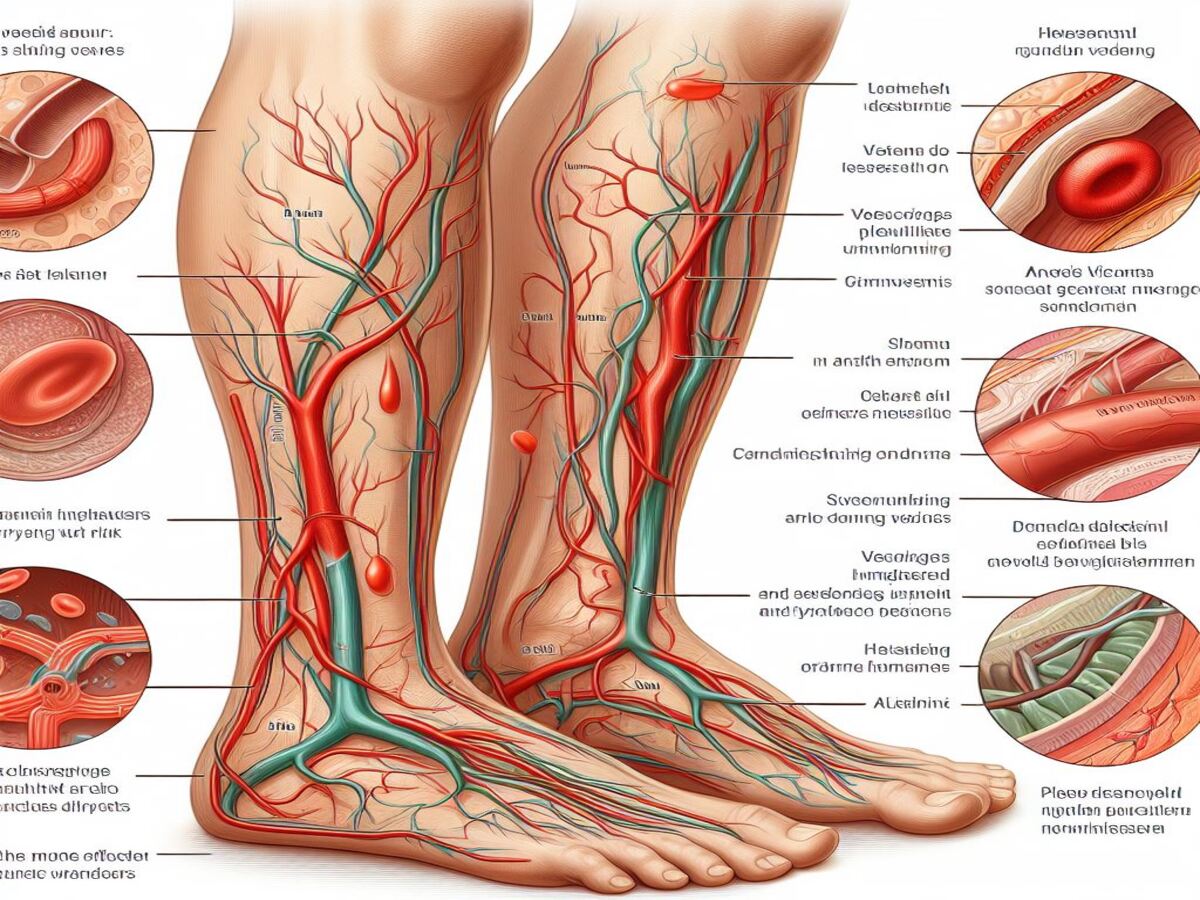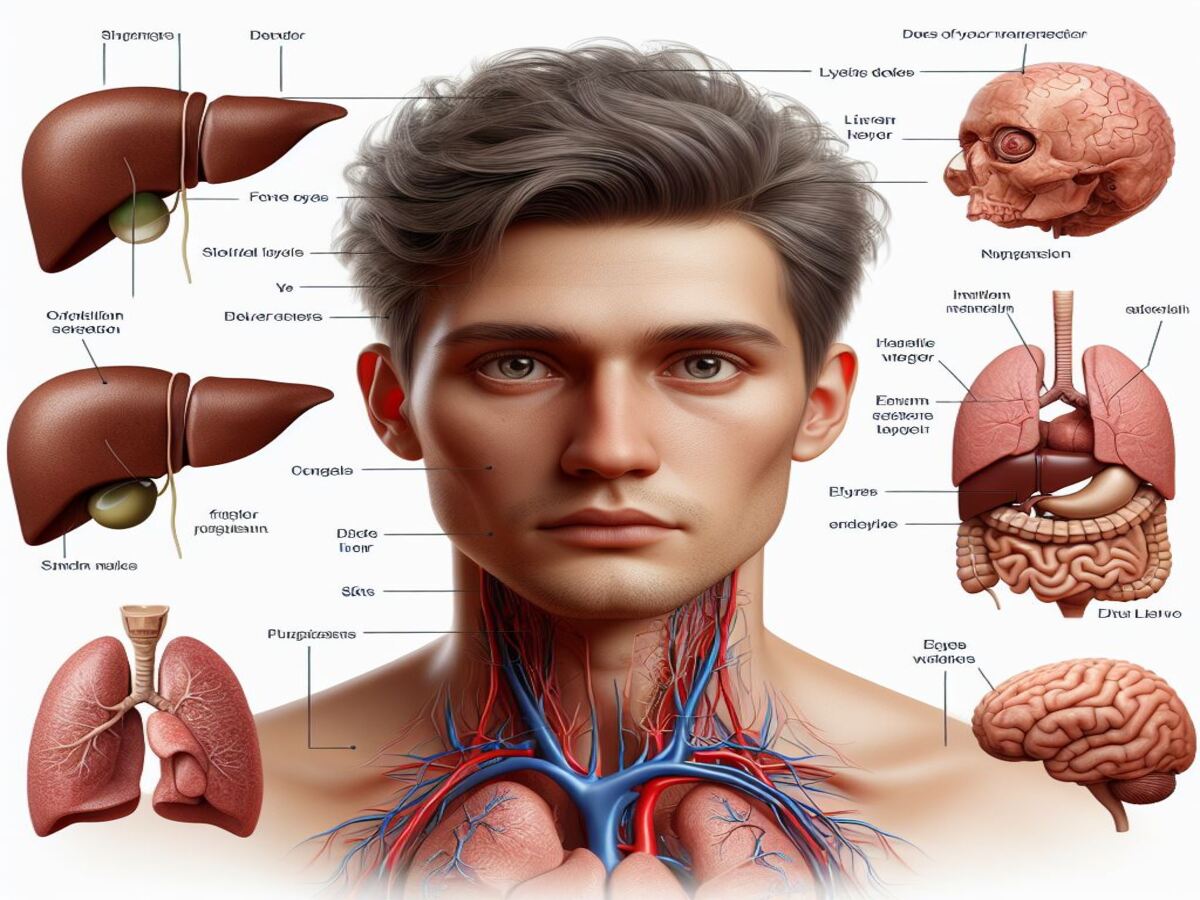Wilson’s Disease: A Rare Metabolic Disorder

Wilson’s disease, once shrouded in mystery, is now a well-understood but rare metabolic disorder. It affects the body’s copper metabolism, accumulating copper in vital organs like the liver, brain, and eyes. While rare, the disease can have devastating consequences if left untreated.
History
The history of Wilson’s Disease is intertwined with the discovery of copper’s role in the human body. In 1912, Samuel Alexander Kinnier Wilson, a British neurologist, identified a cluster of symptoms that included tremors, rigidity, and liver damage. These symptoms, later named after him, were eventually linked to a faulty gene responsible for copper metabolism.
Unveiling the Mystery
Over the next few decades, researchers unravelled the mysteries of Wilson’s Disease. They pinpointed the faulty gene (ATP7B) and its role in regulating copper transport. With this knowledge, scientists developed effective treatments, including chelating compounds that remove excess copper from the body.
A Global Challenge
Despite advancements in treatment, Wilson’s Disease remains a global challenge. Its rarity, often leading to delayed diagnosis, can cause irreversible damage. However, with increased awareness and early detection, individuals with Wilson’s Disease can lead full and productive lives.
Unveiling the Power Within
The story of Wilson’s Disease is a testament to the power of scientific discovery. The journey has made remarkable progress from its enigmatic beginnings to its current understanding. Today, researchers continue to explore the complexities of the disease, seeking new and even more effective treatments.
Unique and Informative
**Rarely** discussed but critically important, Wilson’s Disease offers a unique perspective on the human body’s intricate workings. Understanding this complex disorder enhances our knowledge of copper metabolism and emphasizes the importance of early diagnosis and treatment for rare diseases.
Symptoms of Wilson’s Disease
While rare, Wilson’s Disease can manifest through various symptoms, often mimicking other conditions. Recognizing these subtle signs is crucial for early diagnosis and effective treatment.
Early Stage Symptoms
Fatigue: Uncharacteristic tiredness can be an early indicator of Wilson’s Disease.
Loss of appetite: A quick loss in appetite, especially for meat, may be a warning sign.
Nausea and vomiting: These digestive issues can be caused by higher copper accumulation in the liver.
Neurological Symptoms:
Tremor: Involuntary shaking, particularly in the hands, is a common neurological symptom.
Slurred speech: Difficulty speaking can occur due to problems with muscle control.
Clumsiness: Coordination problems and awkward movements might be observed.
Stiffness: Muscles may feel stiff and rigid, leading to difficulty with movement
Liver Symptoms
Jaundice: The yellow color of skin and eyes results from liver dysfunction.
Ascites: Fluid accumulation in the abdomen can cause bloating and discomfort.
Swelling: Swelling in the ankles and legs can indicate liver problems.

Eye Symptoms
Kayser-Fleischer rings: A greenish-brown ring around the cornea is a unique and diagnostic sign of Wilson’s Disease.
Photophobia: Increased sensitivity to light can be a bothersome symptom.
Psychological Symptoms:
Depression: Mood changes and anxiety can occur due to the impact of the disease on the brain.
Personality changes: Behavioral alterations may be observed.
Rare Symptoms:
Hemolytic anaemia: This condition involves the breakdown of red blood cells.
Kidney problems: This Disease can damage the kidneys in severe cases.
Bone problems: Bone abnormalities such as osteoporosis can occur.
The Importance of Early Detection
While these symptoms can vary greatly in severity and presentation, recognizing them early is essential. Untreated Wilson’s Disease can lead to severe complications, including liver failure, neurological damage, and even death.
Empowering Action:
If you experience any of these symptoms, particularly in combination, it is crucial to consult a healthcare professional immediately. Early diagnosis and timely treatment can effectively manage Wilson’s Disease and ensure a better quality of life.
Awareness is key: Early detection through awareness of the symptoms is crucial for effective management.
Don’t ignore subtle signs: Even seemingly minor symptoms can indicate Wilson’s Disease.
Seek medical attention promptly: Early intervention can significantly affect disease progression.
By recognizing the unseen threat of Wilson’s Disease, we can help individuals and families seek timely diagnosis and treatment, leading to a brighter future.
Stages of Wilson’s Disease
Wilson’s disease affects how the body handles copper. Copper is an essential mineral, but high concentrations may build up in the body’s tissues and organs, leading to damage. This damage can occur in various stages, each with its symptoms and complications.
Here’s a breakdown of the different stages of Wilson’s disease:
Stage 1: Asymptomatic Accumulation
Copper builds up in the liver and other organs, but no symptoms are present.
This stage can last for years or even decades without any noticeable problems.
However, it’s important to note that the longer copper accumulates, the more likely it is to cause damage in the future.
Stage 2: Hepatic Damage
Excess copper damages the liver, leading to symptoms such as:
Fatigue
Loss of appetite
Nausea and vomiting
Jaundice (yellowing of the skin and eyes)
Ascites (fluid buildup in the abdomen)
This stage can be serious and, if left untreated, can lead to liver failure.

Stage 3: Neurologic Stage
Copper starts to accumulate in the brain and other parts of the nervous system, causing neurological symptoms such as:
Tremor
Slurred speech
Clumsiness
Stiffness
Difficulty with coordination
Personality changes
Depression
This stage can be debilitating and significantly impact a person’s quality of life.
Stage 4: Fulminant Hepatic Failure
This is the most severe stage of Wilson’s Disease and is characterized by rapid liver failure.
Symptoms include:
Severe jaundice, Encephalopathy (confusion and disorientation), Coma
This stage is life-threatening and requires immediate medical attention.
Importance of Early Diagnosis and Treatment
Early diagnosis and treatment are very helpful for controlling Wilson’s Disease and preventing complications. If you suspect you have Wilson’s Disease, you must talk to your doctor about getting tested.
There are several tests available to diagnose Wilson’s Disease, including:
Blood tests: These tests measure the quantity of copper in the blood.
Liver biopsy: It involves taking a small sample of tissue from the liver to look for signs of copper damage.
Genetic testing: This can identify the specific mutation in the ATP7B gene that causes Wilson’s Disease.
If you are diagnosed with Wilson’s Disease, there are several treatment options available, including:
Chelation therapy: This removes excess copper from the body.
Zinc supplements: These can help block the absorption of copper from the gut.
Liver transplant: In severe conditions, a liver transplant may be necessary.
Most people with Wilson’s Disease can live long and healthy lives with proper treatment.
Here are some additional points to remember:
The complexity of symptoms varies greatly from person to person.
Some people may never experience symptoms, while others may develop severe complications.
Early diagnosis and treatment are very helpful for controlling Wilson’s Disease and preventing complications.
Several treatment options are available, but the most effective treatment depends on the complexity of the disease.
By understanding the stages of Wilson’s Disease, you can be more aware of the potential symptoms and complications. If you suspect you may have this symptom, consult a doctor.
Causes of Wilsons disease
Wilson’s disease, while rare, has a profound impact on lives. Unraveling the root cause of this condition empowers us to understand its complexities and pave the way for effective management.
Genetic Roots:
The primary culprit behind Wilson’s Disease lies in a faulty gene known as ATP7B. This gene plays a vital role in regulating the body’s copper metabolism. A mutation in this gene disrupts the normal copper removal process, leading to an unseen threat: copper accumulation in vital organs.
Inherited Enigma:
Wilson’s disease follows an autosomal recessive inheritance pattern. This means both parents must carry a mutated gene for the child to inherit the disease. While parents may not exhibit symptoms, they can incidentally pass on the mutated gene to their offspring.
Understanding the Copper Chain Reaction:
Copper is an essential mineral, but too much can be toxic. In healthy individuals, excess copper is efficiently removed from the body through the liver, bile, and intestines. However, in individuals with Wilson’s Disease, the malfunctioning ATP7B gene disrupts this delicate balance, leading to:
Hepatic Overload: The liver becomes the initial battleground for the excess copper. As copper accumulates, it can damage liver cells, leading to dysfunction and potential failure.
Systemic Infiltration: As the disease progresses, copper spills over from the liver and infiltrates other vital organs, including the brain, eyes, and kidneys. This widespread accumulation can manifest in various symptoms, depending on the affected organs.
Unveiling the Uniqueness:
While the genetic basis of Wilson’s Disease is universal, its presentation varies greatly among individuals. The age of onset, severity of symptoms, and organ involvement can differ significantly, highlighting the unique nature of this rare condition.
Empowering with Knowledge:
By understanding the genetic roots and the cascade of events triggered by a faulty ATP7B gene, we can better appreciate the complexities of Wilson’s Disease. This knowledge empowers individuals and healthcare professionals to work towards early diagnosis, prompt treatment, and a brighter future for those affected by this unique and challenging condition.
The Widespread Impacts of Wilson’s Disease.
While rare, Wilson’s Disease casts a long shadow, impacting various aspects of an individual’s life. Understanding these impacts is essential to providing holistic care and support to those facing this unique challenge.
Physical Manifestations
The most prominent impacts of Wilson’s Disease are physical. Excess copper accumulation damages vital organs, leading to a wide range of symptoms, including:
Hepatic dysfunction: Liver failure is a major concern, causing jaundice, fatigue, and abdominal discomfort.
Neurological impairment: Tremors, slurred speech, clumsiness, and stiffness can significantly impact mobility and coordination.
Eyesight problems: Kayser-Fleischer rings, a unique symptom of Wilson’s Disease, can appear around the cornea, signifying copper buildup in the eyes.
Kidney issues: Kidney stones and abnormal amino acid levels in urine may emerge due to copper’s detrimental effects.
Bone abnormalities: Osteoporosis and an increased risk of fractures can be associated with Wilson’s Disease.
Psychological Burdens
Significant psychological burdens often accompany the physical challenges of Wilson’s Disease. Individuals may experience:
Depression: The emotional toll of a chronic illness and the uncertainty surrounding its progression can lead to depression.
Anxiety: Concerns about managing the disease and its potential complications can fuel anxiety and stress.
Personality changes: Copper’s impact on the brain can manifest as personality changes, affecting relationships and social interactions.
Low self-esteem: Physical limitations and social withdrawal can contribute to low self-esteem and social isolation.
Social and Economic Implications
The impact of Wilson’s Disease extends beyond the individual, affecting families and communities. The disease can lead to:
Strained relationships: Family members can face difficulty in fulfilling the emotional and physical demands of caring for someone with Wilson’s Disease.
Financial difficulties: The cost of treatment, including medication and potential liver transplants, can create significant financial strain.
Limited educational and career opportunities: Physical and cognitive impairments associated with the disease can limit educational pursuits and career options.
Social isolation: Individuals with Wilson’s Disease may feel isolated due to limited mobility and social interaction.
Breaking the Cycle of Impact
By raising awareness, promoting research, and providing comprehensive support services, disease powers individuals and families to navigate this challenging journey.
* Financial assistance programs can help alleviate the burden of treatment costs.
* Advocacy efforts can promote greater awareness and access to resources.
Through increased understanding and collaborative efforts, we can break the impact cycle and create a brighter future for those affected by Wilson’s disease.
Diagnosing Wilson’s Disease
Wilson’s disease, a rare but impactful disorder affecting metabolism, can be challenging to diagnose due to its varied and often subtle symptoms. However, with the right tools and knowledge, we can **unmask the mystery** and ensure timely intervention.
**Initial Steps:**
The diagnostic journey begins with a thorough medical history and physical examination. **Key questions** will focus on:
* Family history of Wilson’s disease
* Presence of characteristic symptoms like tremors, jaundice, or Kayser-Fleischer rings
* Diseaseal environmental exposure to excess copper
Investigating the Copper Levels:
Blood tests are the first line of investigation, measuring:
Serum ceruloplasmin: This protein binds to copper in the blood. Low levels may indicate Wilson’s disease.
Serum copper: Elevated levels can suggest copper accumulation.
24-hour urine disease This test measures the amount of copper excreted in the urine, with high levels pointing towards Wilson’s disease.
Imaging the Problem
Imaging tests can provide valuable insights into the extent of diseaseamage.
Liver ultrasound: This test can detect liver size and texture abnormalities.
Liver MRI: This imaging technique offers detailed images of the liver, aiding in the diagnosis of Wilson’s disease.
Delving Deeper: Further diagnostic tests may be necessary, including:
Liver biopsy: The process of taking a small tissue sample from the liver to examine for copper accumulation and assess liver damage is called liver biopsy.
Genetic testing: This can confirm the presence of mutations in the ATP7B gene, definitively diagnosing Wilson’s disease.
Observing the Eyes: A thorough eye examination is crucial, as the presence of Kayser-FleiDiseaseings (a greenish-brown ring around the cornea) is a diagnostic hallmark of Wilson’s disease.
[Image of Kayser-Fleischer rings]
Building the Puzzle:
The diagnosis of Wilson’s disease is based on factors like clinical features, laboratory tests, imaging findings, and genetic diseases. Healthcare professionals can confidently diagnose and manage this unseen threat by piecing together this information.
Importance of Early Diagnosis: Early diagnosis prevents irreversible organ damage and ensures effective treatment. Individuals with a family history of Wilson’s disease or those experiencing characteristic symptoms should seek prompt medical attention.
Empower Diseasetion: By understanding the diagnostic process, we can empower individuals and families to actively participate in their healthcare journey.
* No single test can definitively diagnose Wilson’s disease.
* Early diagnosis is crucial for preventing complications and ensuring effective treatment Diseaseith proper management; most individuals with Wilson’s disease can live long and healthy lives.
By working together, we can **unmask the mystery** of disease and pave the way for a brighter future for those affected by this **rare** condition.
Treatment Options for Wilson’s Disease
Wilson’s disease, while **rare**, can significantly impact individuals and families. Fortunately, with the Disease treatment approach, this unseen threat can be controlled, and standard of life can be significantly improved.
The Cornerstone of Treatment:
The main treatment step is to remove excess copper from the body and prevent further organ damage. It involves a multifaceted approach, often combining medications and dietary changes:
1. Chelation Therapy: Chelating agents bind to copper in the blood and promote its excretion through urine or bile.
* Common chelating agents include:
* Penicillamine (Cuprimine, Depen)
* Trientine (Syprine)
* Tetrathiomolybdate (Bis-choline tetrathiomolybdate)
* Each chelating agent has its own **unique side effects and monitoring requirements**.
2. Dietary Modifications:
* Limiting dietary copper intake is crucial to prevent further accumulation.
* This includes avoiding foods rich in copper, such as:
* Organ meats (liver, kidney)
* Shellfish (oysters, lobster)
* Chocolate
* Nuts and seeds
* Dried fruits
3. Zinc Supplements:
* Zinc supplements can help block the absorption of copper from the gut.
* This is typically used as a **maintenance therapy** after chelation therapy has removed excess copper.
4. Vitamin B6 Supplementation:

* Some individuals with Wilson’s disease may need additional vitamin B6 due to chelating agents causing its depletion.
**Tailoring Disease Approach:**
The optimal treatment plan depends on various factors, including:
* Age and overall health of the individual
* Severity of symptoms
* Presence of organ damage
* Response to medication
**Monitoring Progress:**
Regular monitoring is crucial to assess the effectiveness of treatment and adjust it as needed. This may involve:
* Regular blood tests to measure copper levels
* Liver function tests
* Imaging tests
* Eye examinations
**Empowering with Knowledge:**
By understanding the treatment options available and the importance of adherence to medication and dietary recommendations, individuals with Wilson’s disease can actively participate in their healthcare journey and achieve optimal outcomes.
LookiDiseased:
Research is ongoing to develop new and improved treatments for Wilson’s disease, including:
* Gene therapy
* Novel copper chelating agents with fewer side effects
* ImproDiseasegnostic methods for early detection
**Remember:**
* Treatment for Wilson’s disease is lifelong.
* Early diagnosis and treatment adherence can significantly improve the prognosis. Individuals with Wilson’s disease should be under the care of a specialized healthcare team.
* With proper management, most diseases with Wilson’s disease can live long and fulfilling lives.
Famous People with Wilson’s Disease
Unfortunately, due to the rarity of Wilson’s disease and the often private nature of health information, there is no widely available information about 20 people with Wilson’s disease.
However, I can share information about several individuals who have publicly spoken about their experiences with the disease. Colbert: The American comedian and talk show host revealed his diagnosis of Wilson’s disease in 2017. He has spoken openly about disease experiences with the disease, raising awareness and advocating for research funding.
Samantha Brown: The American Diseased television host was diagnosed with Wilson’s disease as a child. She has written about her experiences with the disease in her book “Girl Meets Food” and has spoken about the importance of early diagnosis and treatment.
Ryan Reynolds: The Canadian actor has spoken about his experience with Wilson’s disease in interview has said that the disease has made him more aware of his disease and has inspired him to advocate for others with chronic illnesses.
Natasha Bedingfield: The British singer-songwriter has spoken about her experience with Wilson’s disease in interview he has said that the disease has taug Disease to appreciate the good times and be grateful for her health.
David Cassidy: The American singer and actor was diagnosed with Wilson’s disease in 2008. He spoke openly about his experience with the disease disease awareness and advocating for research.
B.B. King: The American blues musician was diagnosed with Wilson’s disease in 2004. He continued to perform until he died in 2015, inspiring his resilience and determination.
Joan Rivers: The American talk show host and actress was diagnosed with Wilson’s disease in 2013. She died from complications of the disease in 2014.
Richard Disease: The American theoretical physicist was diagnosed with Wilson’s disease in 1979. He continued to work and publish until he died in 1988.
David Helfgott: The Australian pianist was diagnosed disease Wilson’s disease in 1996. His life story was the subject of the film “Shine.”
David Benioff: The American author and screenwriter was diagnosed disease Wilson’s disease as a child. He has written about his experiences with the disease in his book “City of Thieves.”
It is important to the disease that this is not an exhaustive list, and many other individuals with Wilson’s disease have yet to speak about their experiences publicly. The diseases listed above are examples of people who have used their disease to raise awareness and understanding of these rare and challenging diseases.

